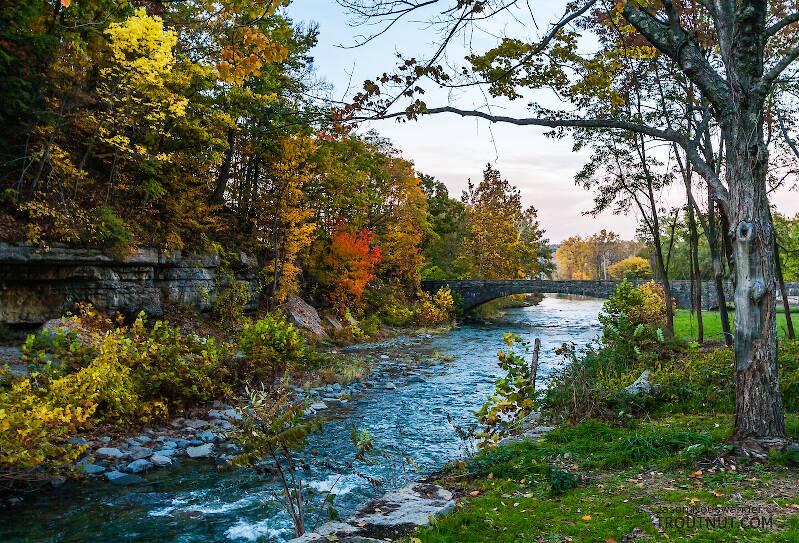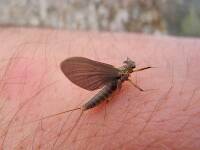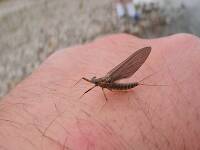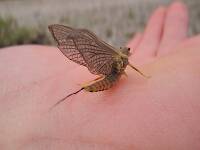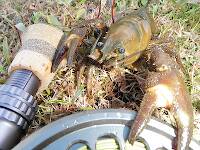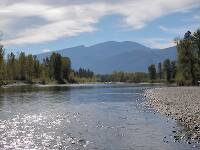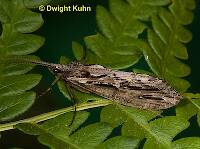
Hex Mayflies
Hexagenia limbata
The famous nocturnal Hex hatch of the Midwest (and a few other lucky locations) stirs to the surface mythically large brown trout that only touch streamers for the rest of the year.
Featured on the forum

As far as I can tell, this species has only previously been reported from one site in Oregon along the Columbia gorge. However, the key characteristics are fairly unmistakable in all except for one minor detail:
— 4 small yellow spots on frons visible in photos
— Narrow occipital spinule row curves forward (but doesn’t quite meet on stem of ecdysial suture, as it's supposed to in this species)
— Short spinules on anterior margin of front legs
— Short rposterior row of blunt spinules on abdominal tergae, rather than elongated spinules dorsally
I caught several of these mature nymphs in the fishless, tiny headwaters of a creek high in the Wenatchee Mountains.
— 4 small yellow spots on frons visible in photos
— Narrow occipital spinule row curves forward (but doesn’t quite meet on stem of ecdysial suture, as it's supposed to in this species)
— Short spinules on anterior margin of front legs
— Short rposterior row of blunt spinules on abdominal tergae, rather than elongated spinules dorsally
I caught several of these mature nymphs in the fishless, tiny headwaters of a creek high in the Wenatchee Mountains.

Troutnut is a project started in 2003 by salmonid ecologist Jason "Troutnut" Neuswanger to help anglers and
fly tyers unabashedly embrace the entomological side of the sport. Learn more about Troutnut or
support the project for an enhanced experience here.
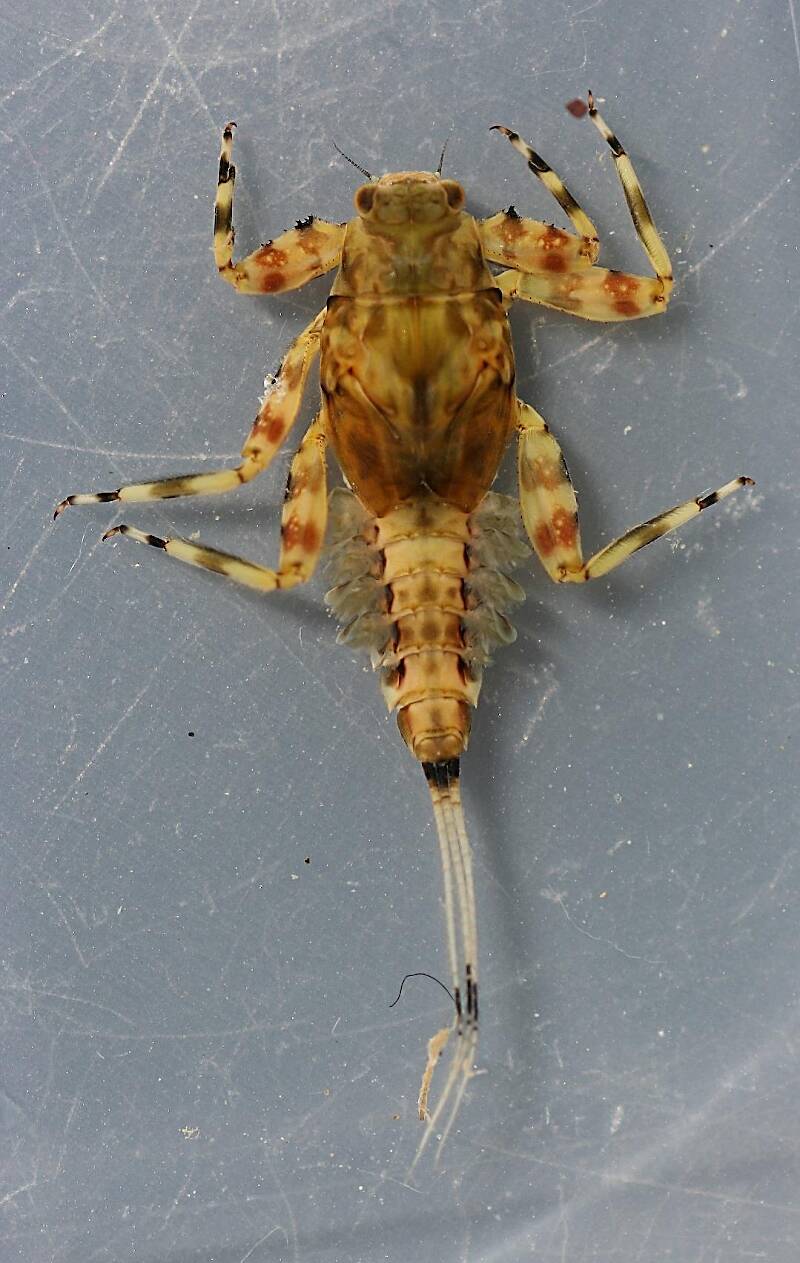
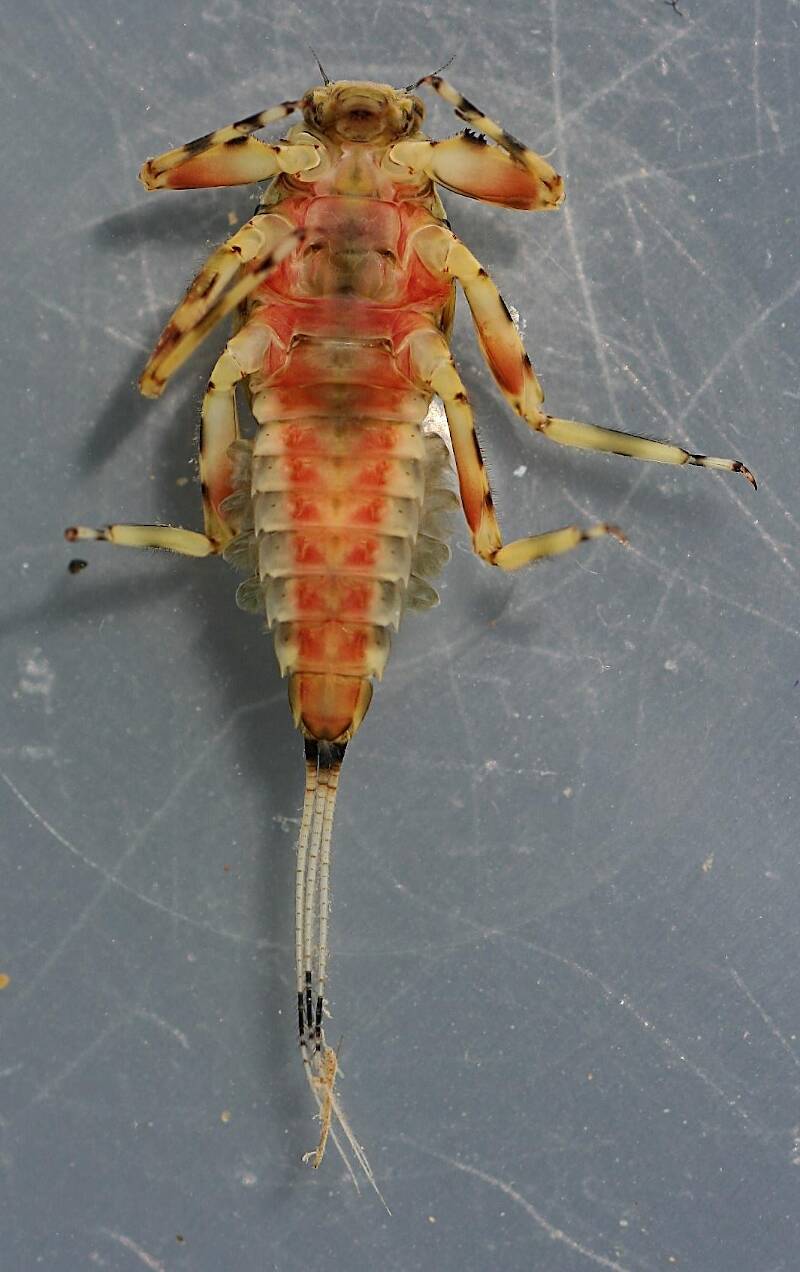

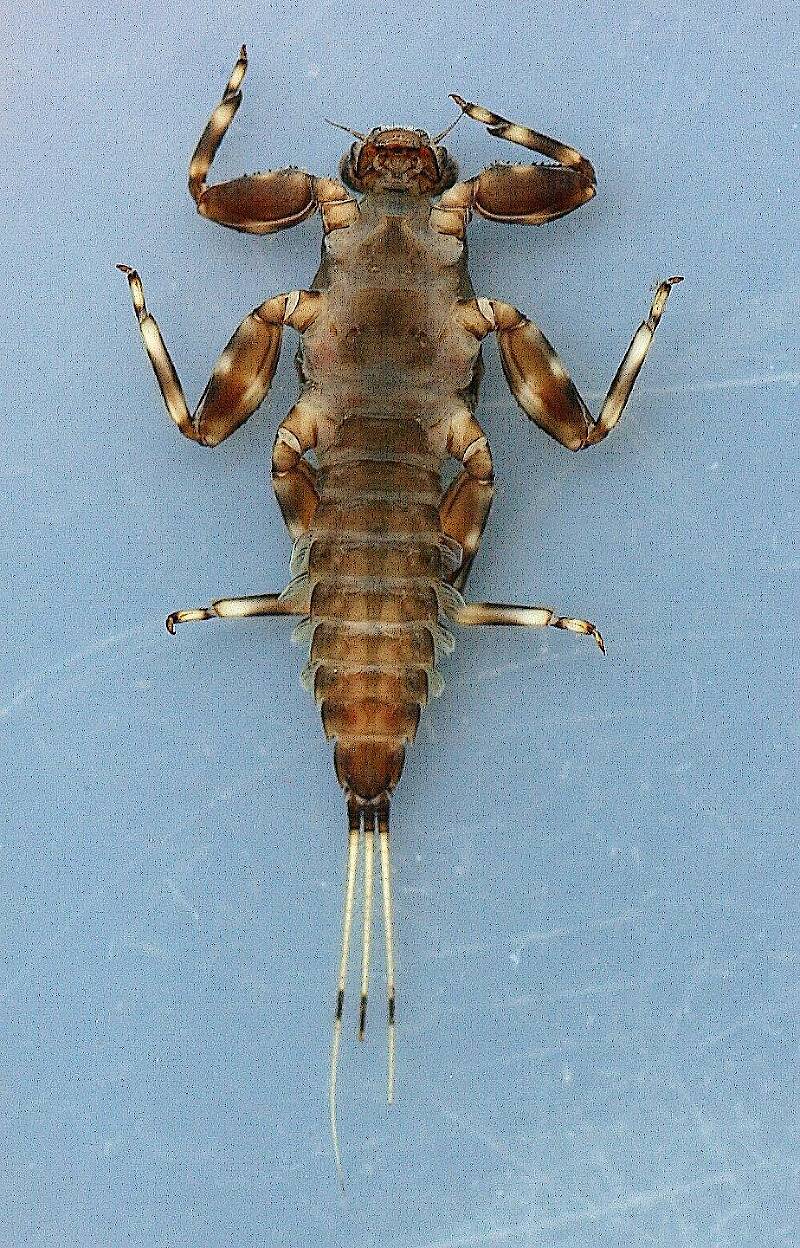
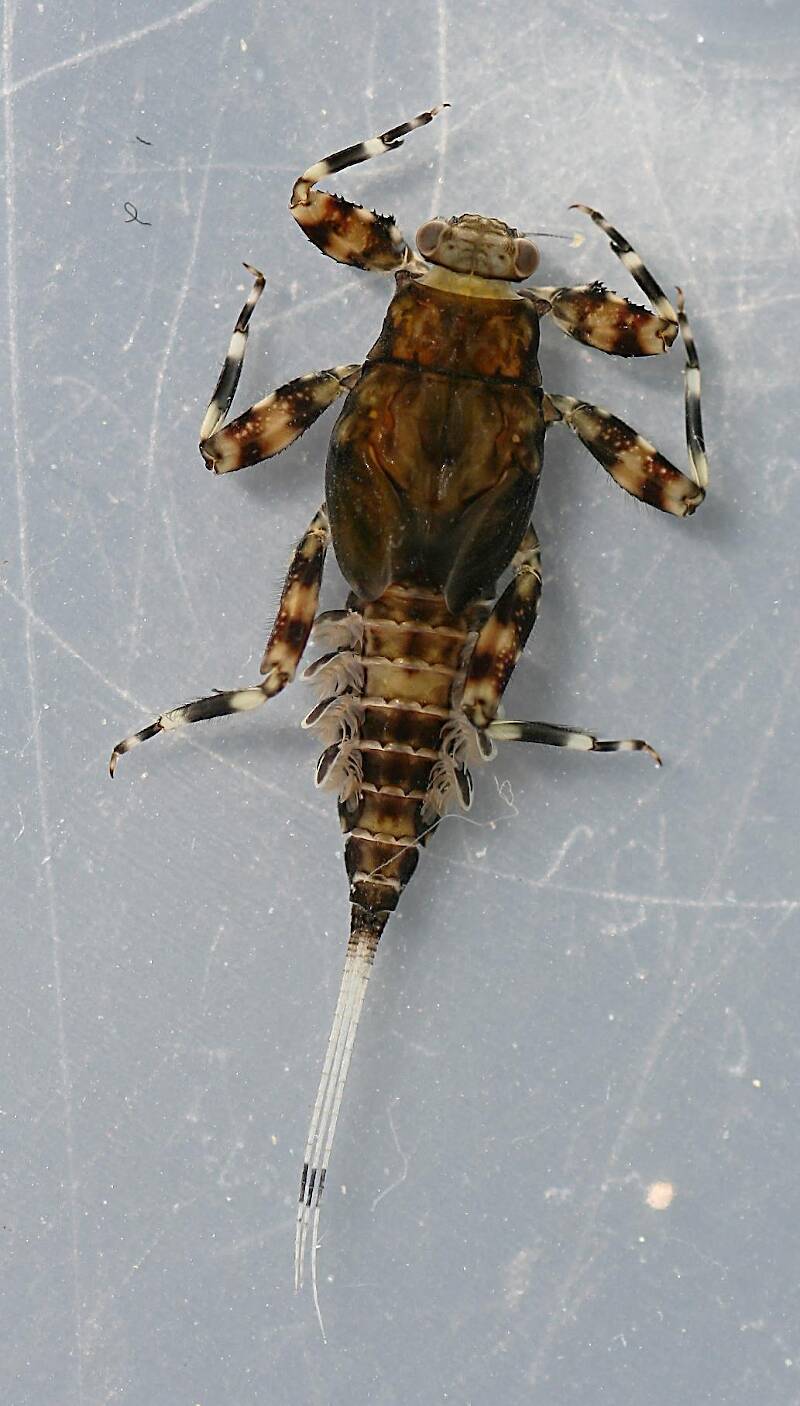
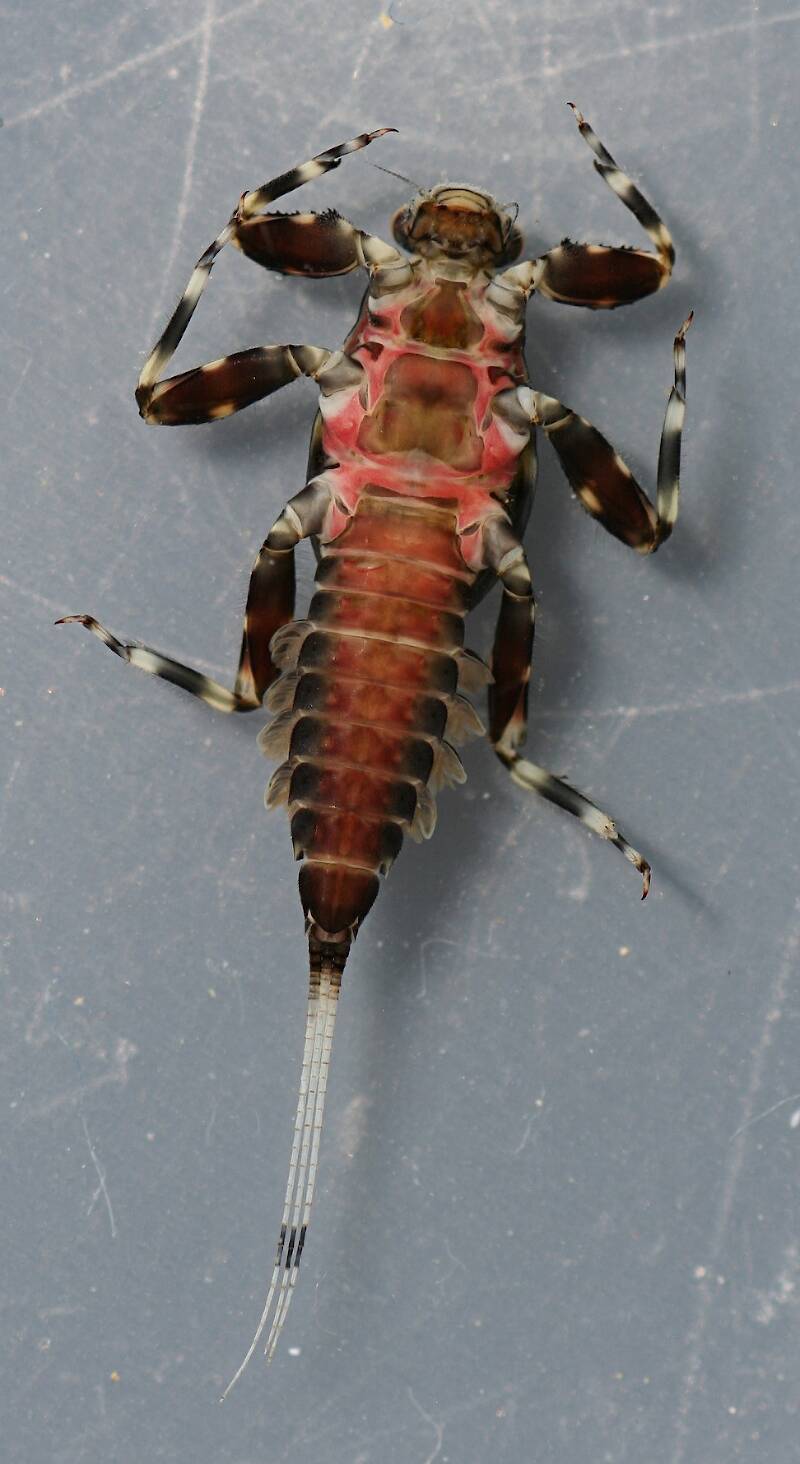
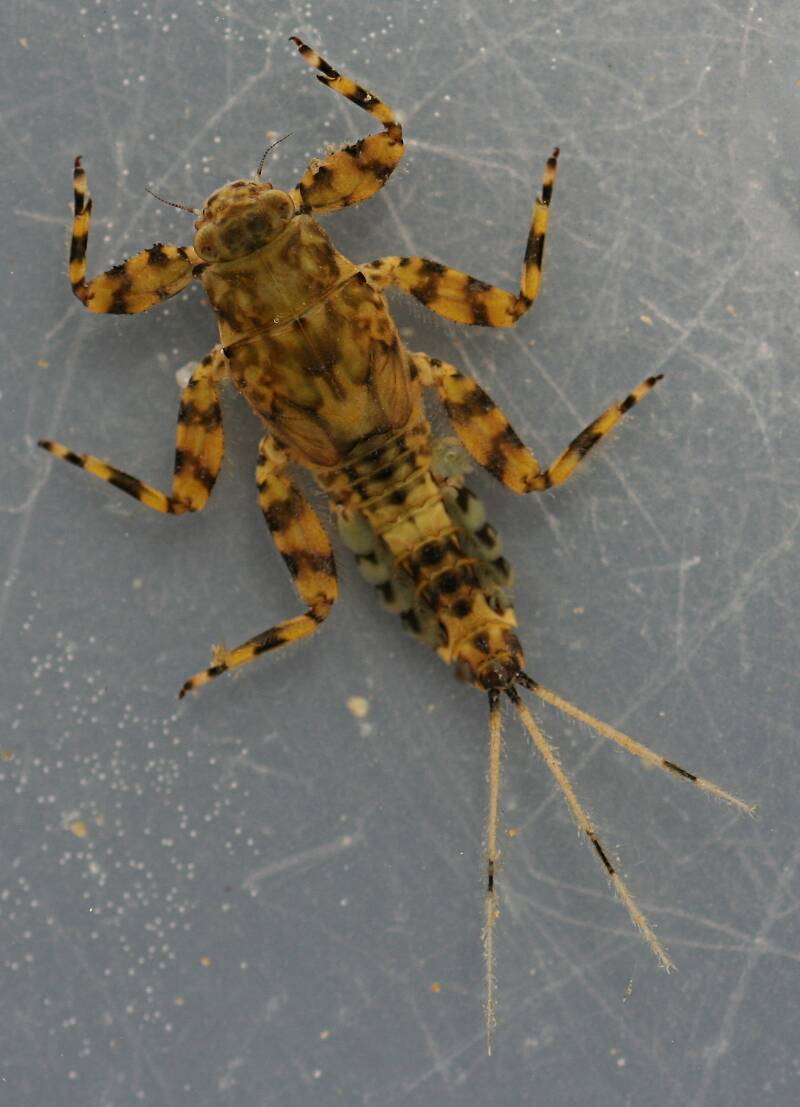
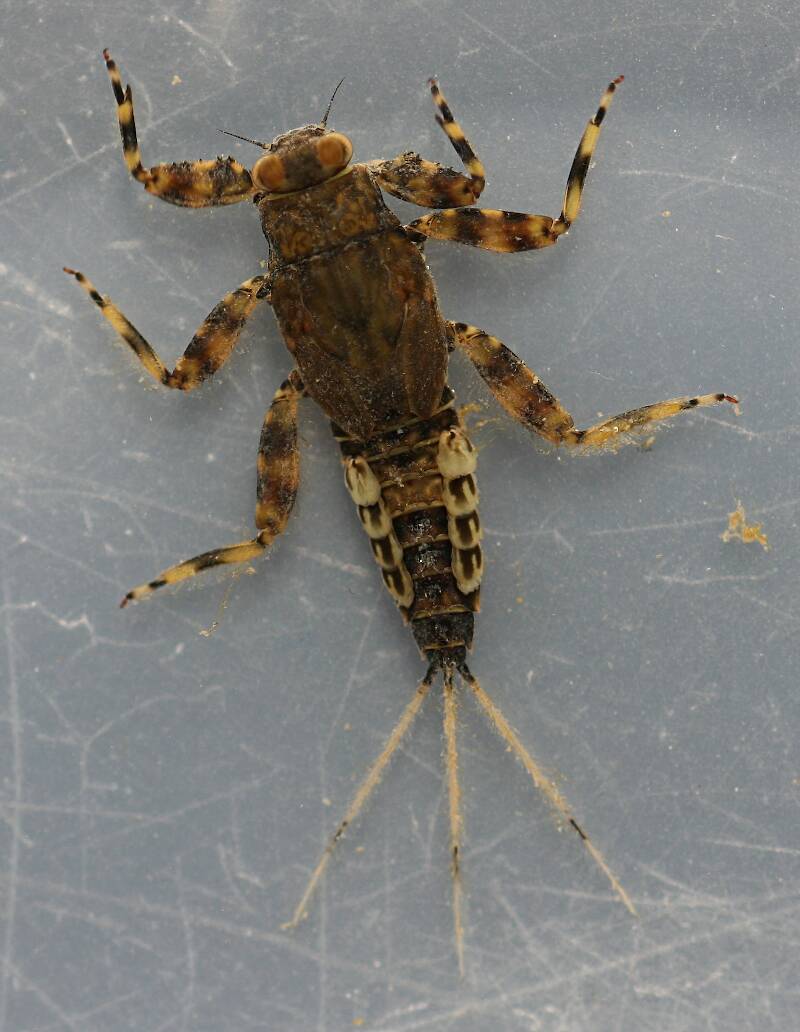
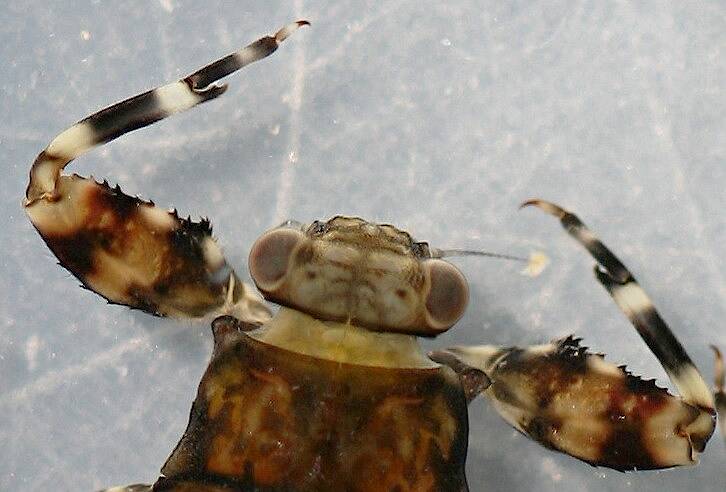
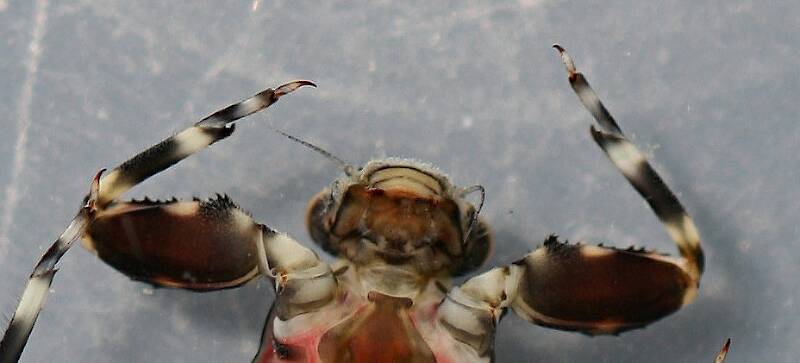
Millcreek on Jul 17, 2014July 17th, 2014, 3:21 pm EDT
These nymphs are common in the Russian River from mid-February to late April (at least as late instars). I keep going back and forth between D.coloradensis
and D. flavilinea without resolving the issue. I know a lot of folks say to just leave it at D. coloradensis / flavilinea but I thought I'd run it by the folks here and see what you have to say. Size ranges from 9-16 mm (excluding cerci). I put a fairly large number of pictures here to show the range of color variation.
and D. flavilinea without resolving the issue. I know a lot of folks say to just leave it at D. coloradensis / flavilinea but I thought I'd run it by the folks here and see what you have to say. Size ranges from 9-16 mm (excluding cerci). I put a fairly large number of pictures here to show the range of color variation.
"If we knew what it was we were doing, it would not be called research, would it?"
-Albert Einstein
-Albert Einstein
Entoman on Jul 17, 2014July 17th, 2014, 5:15 pm EDT
Boy you sure pick the fun ones, Mark. :) These are photos of flavilinea, at least for now...
The problem for us in CA is that nymphal specimens of these guys meld characters used in the keys from both species. Your excellent photos show prime examples of this. The standard is still Allen & Edmunds '62. They mention this problem with these species in CA and I'm not aware of any later studies that resolve it. Even with this problem in mind, A & E came to the conclusion that they are flavilinea everywhere excepting the Northeastern part of the state where coloradensis holds sway. Based on that I am comfortable with calling yours flavilinea - at least until new research becomes available...;)
The problem for us in CA is that nymphal specimens of these guys meld characters used in the keys from both species. Your excellent photos show prime examples of this. The standard is still Allen & Edmunds '62. They mention this problem with these species in CA and I'm not aware of any later studies that resolve it. Even with this problem in mind, A & E came to the conclusion that they are flavilinea everywhere excepting the Northeastern part of the state where coloradensis holds sway. Based on that I am comfortable with calling yours flavilinea - at least until new research becomes available...;)
"It's not that I find fishing so important, it's just that I find all other endeavors of Man equally unimportant... And not nearly as much fun!" Robert Traver, Anatomy of a Fisherman
Millcreek on Jul 17, 2014July 17th, 2014, 7:30 pm EDT
Hey Kurt, if I can't carry the load myself I'll hand it to someone else.:)
I used A & E '62 to key the specimens out. I was going with flavilinea myself until I looked at Meyer and McCafferty's Mayflies of California (2008).
While they don't list coloradensis in Sonoma County they do have them listed for Marin and Lake as well as several other counties in NW CA. The problem there is they are based on larval specimens and someone could have confused them with flavilinea. I'm still straddling the fence on this one.
I used A & E '62 to key the specimens out. I was going with flavilinea myself until I looked at Meyer and McCafferty's Mayflies of California (2008).
While they don't list coloradensis in Sonoma County they do have them listed for Marin and Lake as well as several other counties in NW CA. The problem there is they are based on larval specimens and someone could have confused them with flavilinea. I'm still straddling the fence on this one.
"If we knew what it was we were doing, it would not be called research, would it?"
-Albert Einstein
-Albert Einstein
Entoman on Jul 17, 2014July 17th, 2014, 10:11 pm EDT
Yeah, that survey has always been a bit of a puzzle to me. If the key's authors describe them as unworkable for our region, how did workers make determinations in that species survey using them? My hunch is we got us a whole lot o' intergradin' goin' on round heah! :) The grandis sub-species have a similar problem where their ranges overlap.
"It's not that I find fishing so important, it's just that I find all other endeavors of Man equally unimportant... And not nearly as much fun!" Robert Traver, Anatomy of a Fisherman
Millcreek on Jul 21, 2014July 21st, 2014, 12:37 pm EDT
Took a look at the manual Luke Jacobus and compadres put together for SAFIT and am now inclined to go with Drunella flavilinea because of the broadly triangular spines (at least in relation to Drunella coloradensis).
Unless of course your comment turns out to be correct. PC or not, it sure made me laugh.
Unless of course your comment turns out to be correct.
My hunch is we got us a whole lot o' intergradin' goin' on round heah! :)
"If we knew what it was we were doing, it would not be called research, would it?"
-Albert Einstein
-Albert Einstein
Entoman on Jul 21, 2014July 21st, 2014, 4:45 pm EDT
Well, Foghorn Leghorn aside, that was the gist of A&E's paper regarding our state. Intergrades between the two species where their ranges overlap coupled with the curious phenomenon of specimens of both becoming more spiny as their ranges move westward toward the coast renders their keys unworkable for us. Sure like to know how the later M&M paper determined that coloradensis inhabits our coastal counties.
"It's not that I find fishing so important, it's just that I find all other endeavors of Man equally unimportant... And not nearly as much fun!" Robert Traver, Anatomy of a Fisherman
Millcreek on Jul 21, 2014July 21st, 2014, 5:29 pm EDT
I suspect that another quote, one from Cool Hand Luke might sum it up. The warden of the chain gang when he addresses the convicts, "What we have here is a failure to communicate."
"If we knew what it was we were doing, it would not be called research, would it?"
-Albert Einstein
-Albert Einstein
Entoman on Jul 21, 2014July 21st, 2014, 6:27 pm EDT
:)
"It's not that I find fishing so important, it's just that I find all other endeavors of Man equally unimportant... And not nearly as much fun!" Robert Traver, Anatomy of a Fisherman
PaulRoberts on Jul 22, 2014July 22nd, 2014, 1:00 am EDT
Nice discussion guys. Thanks.
Crepuscular on Jul 22, 2014July 22nd, 2014, 5:25 am EDT
Well, Foghorn Leghorn aside, that was the gist of A&E's paper regarding our state. Intergrades between the two species where their ranges overlap coupled with the curious phenomenon of specimens of both becoming more spiny as their ranges move westward toward the coast renders their keys unworkable for us. Sure like to know how the later M&M paper determined that coloradensis inhabits our coastal counties.
What? Variation among the Ephemerellids, no way...
Quick Reply
Related Discussions
Topic
Replies
Last Reply
10
Sep 12, 2010
by Martinlf
by Martinlf

